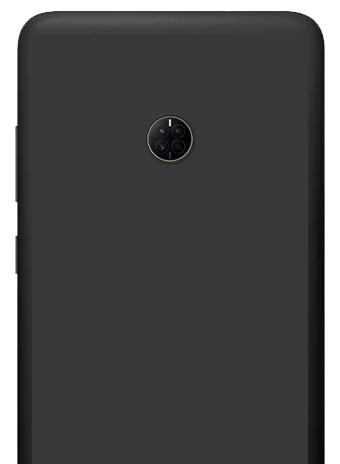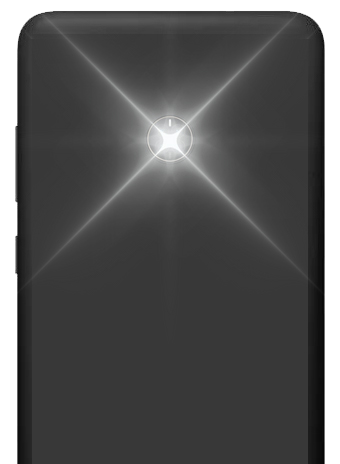What is Flashing Morse Code?
Flashing Morse Code is a method of representing Morse code using light signals. Unlike traditional Morse code that relies on sound, flashing Morse code uses visual signals to communicate. A light source, such as a lamp or LED, flashes in a specific pattern to represent the "dots" (short flashes) and "dashes" (long flashes) of Morse code. This method is often used for maritime signals, in silent environments, or for long-distance visual communication in certain emergency situations.
How is Flashing Morse Code Represented?
Flashing Morse Code is created by controlling the on-and-off states of a light source to represent different Morse code signals. Typically, a "dot" (·) is represented by a short flash lasting one time unit, while a "dash" (-) is represented by a longer flash lasting three time units. The timing between signals is also a crucial part of communication: dots are separated by a space of one time unit, characters are separated by a space of three time units, and words are separated by a space of seven time units. Different combinations of dots and dashes represent different letters, numbers, and punctuation marks.
For example, the letter "A" in Morse code is represented as ".-", which would appear as a short flash followed by a long flash in flashing Morse code. The number "1" is represented as ".----" in Morse code, which would appear as a short flash followed by four long flashes. Similarly, the letter "S" is represented by "...", which is shown as three short flashes. The letter "O" is represented by "---", or three long flashes. Thus, the "SOS" distress signal in flashing Morse code appears as: short-short-short (pause), long-long-long (pause), short-short-short.
Flashing Morse Code vs. Sound Morse Code
While both sound and flashing Morse codes use the same encoding system, they differ significantly in their applications and usage scenarios.
Usage Environment:
- Sound Morse Code: Mainly used for radio communications or transmitted through audio devices. It is best suited for quiet environments, as background noise can interfere with signal reception and decoding.
- Flashing Morse Code: Best used in visible range environments, such as at sea or at night for signaling through light. It is particularly useful in situations where silent operation is required, such as military operations or rescue scenarios.
Suitability:
- Sound Morse Code: Suitable for radio operations, shortwave communication, and other situations that usually require specialized equipment and some operational skills.
- Flashing Morse Code: Simple and easy to use. All you need is a light source, like a flashlight or LED lamp, making it perfect for outdoor survival, emergency signaling, and similar scenarios.
Receiving and Decoding:
- Sound Morse Code: Requires hearing to receive signals, relying on changes in tone and rhythm to identify information. Noise or signal interference can affect decoding accuracy.
- Flashing Morse Code: Relies on visually receiving the frequency and duration of light flashes. It can be used in environments with good visibility and is not easily affected by background noise.
Because of these differences, flashing Morse code can be more effective in specific scenarios, such as those that require silent communication, emergency rescue situations, or high-noise environments.
How to Use Flashing Morse Code Converter
The use of the Flashing Morse Code Converter is very simple, here are the steps:
- Enter Text: Type the text you want to convert in the input box. It can be plain English text or Morse code.
- Choose Options: Select the input type, language, and WPM. Choosing the wrong input type or language may affect the conversion result. WPM controls the flashing speed.
- Click "Convert": The system will automatically generate the flashing Morse code based on your input and display it on the screen as a light signal.
- Download the Result: If you are satisfied with the result, you can click the "Download" button to save the flashing Morse code as a video file for easy sharing or use.
FAQs
In which scenarios is flashing Morse code applicable?
Flashing Morse code is suitable for situations where visual signals need to be transmitted over long distances, especially where sound signals cannot reach, such as camping, distress signaling, or long-distance communication. It is also useful in environments where silent operation is necessary, such as military activities.
Do I need special equipment to use flashing Morse code?
No special equipment is needed. You can use any device that can control a light source, such as a flashlight or phone flash.
Can the flashing speed of the flashing Morse code converter be adjusted?
Yes, you can adjust the flashing speed in the conversion options. We provide multiple speed options so you can choose one that suits your visual perception and ensures the flashing signal is clear and easy to understand.
Can the flashing color of the flashing Morse code converter be adjusted?
No, our converter currently does not support color adjustment.
Why isn't the flashing Morse code I converted responding?
It could be due to browser compatibility issues. We recommend using the latest version of Chrome, Firefox, or Edge browsers to access our tool. If the problem persists, try refreshing the page or clearing your browser cache.
When is the best time to use flashing Morse code? Does the intensity of the light source affect the results?
Flashing Morse code works best at night or in low-light environments. The brightness and color of the light source may affect the visibility of the flashing signal. It is recommended to use a moderately bright light source, such as an LED lamp or flashlight, and use it at night or in low-light environments for the best results.
How far can flashing Morse code be transmitted?
The transmission distance depends on the brightness of the light source and environmental conditions. Generally, a flashlight or high-intensity LED light can effectively transmit over several hundred meters.
What should I do if the converted Morse code flashing effect won't play?
Please check if your browser has disabled JavaScript or video playback features. If they are disabled, enable these features and refresh the page. Also, make sure your device supports playing MP4 format.
Can the flashing Morse code converter decode back to readable text from the flashing Morse code?
Sorry, the flashing Morse code converter does not support decoding back at the moment. We plan to add this feature to our website in the future, so stay tuned!
Does this tool support multi-language characters?
Yes. The Flashing Morse Code Converter supports multiple languages, including Latin, Cyrillic, Greek, Hebrew, Arabic, Persian, Japanese, Korean, and Thai.

